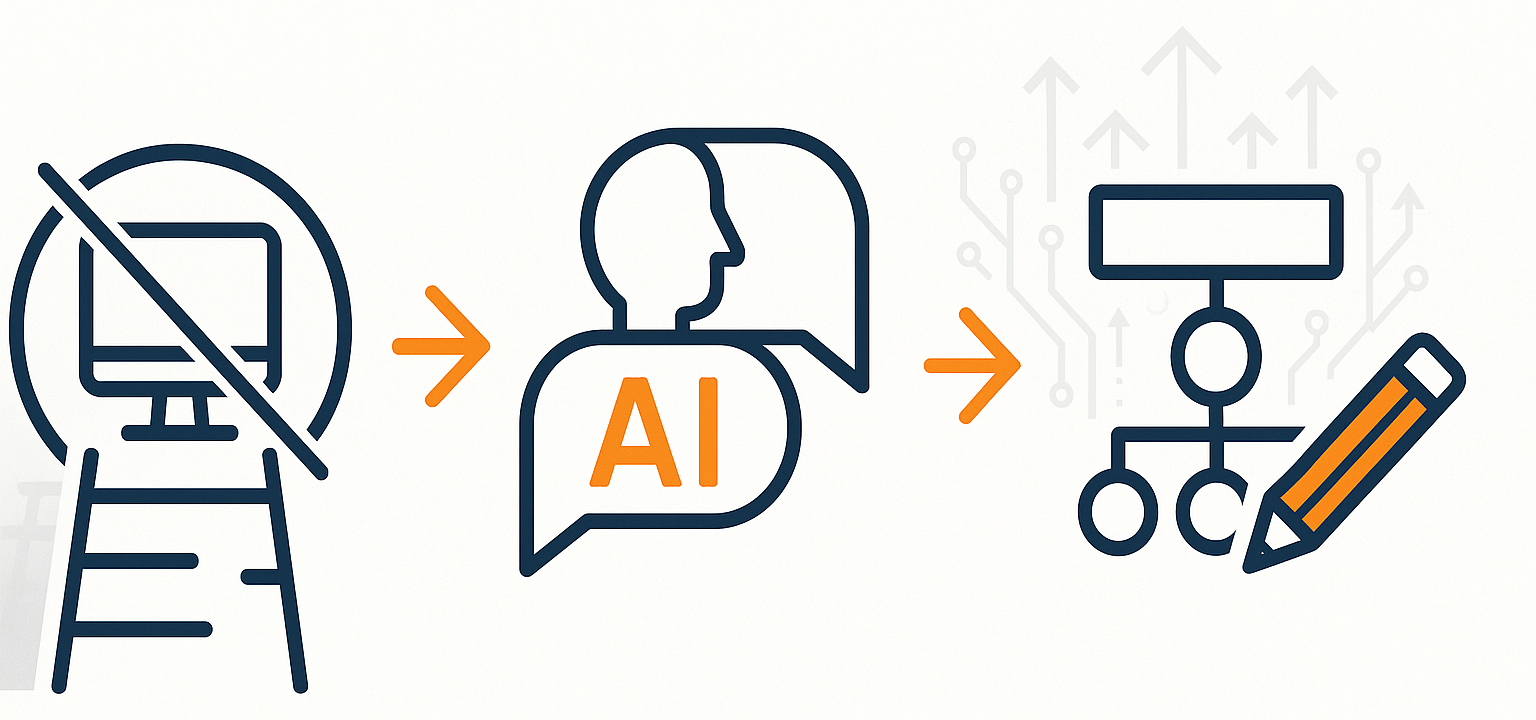The Entry-Level Crisis That's Actually Your Opportunity
I get this question everywhere I go.
"If AI handles all the formative work that used to train junior employees, how will they develop skills? What happens when there's no bottom rung on the career ladder?"
Fair question. Terrifying question, actually.
We're getting a stark look at the answer right now, from leaders in this space.
But first - deep breath. Because buried in all the chaos and panic is a massive opportunity that most people are completely missing.
Let me start with some news that should wake us up.
Dario Amodei - CEO of Anthropic, one of the companies literally building the AI that's changing everything - just told Axios that AI could wipe out 50% of entry-level white-collar jobs within five years. We're talking unemployment spiking to 10-20%.
Even crazier- top engineers at Anthropic say this disruption doesn't need any new technology. This happens even if AI development stopped evolving today. (I would take it a step further - even if the tech stopped evolving a year ago.)
Meanwhile, Aneesh Raman at LinkedIn wrote in the New York Times that the bottom rung of the career ladder is already breaking.
Consider this:
Junior developers aren't debugging code anymore - AI does it faster.
First-year lawyers aren't reviewing documents - AI crushes through weeks of work in hours.
New accountants aren't doing data entry - ChatGPT handles reconciliation better than humans.
The traditional entry-level job will become extinct.
All this points to one central point that everyone's missing in all the doom and gloom:
The real disruption isn't technological - it's behavioral.
That is absolultely bizarre, critical, and it changes everything.
WHY THIS CAN BE GOOD NEWS
Think about what Amodei is really saying. This transformation doesn't require better AI. It doesn't require new breakthroughs or fancy tech.
It happens with the tools we have right now.
That means the companies and people who figure this out first - not who wait for better technology - will completely dominate.
It's like if someone told you that getting in better shape didn't require learning particle physics or buying expensive equipment. You could start today with what you have. The challenge isn't technical knowledge - it's changing your behavior.
You can master this AI transformation the same way. Your whole company can. Today. With zero new skills.
The problem - and is your brain will fight you every step of the way, because behavioral change is hard.
That's what we do at AI Mindset - our AI adoption approach is done through behavioral change, at scale. It works.
THE THREE-STEP OPPORTUNITY FRAMEWORK
While everyone else panics about what's coming, you can be building what's next. Here's how:
STEP ONE: FORGET THE TECHNOLOGY
Stop waiting for better AI tools. That's like waiting for a better treadmill before getting in shape.
What exists today - ChatGPT, Claude, the tools you probably already have access to - is powerful enough to completely transform how work gets done.
The bottleneck isn't the technology. It's that most people treat these tools like fancy Google instead of brilliant colleagues.
Your brain sees a text box and automatically thinks "search engine." But these aren't search engines. They're thinking partners that can reason, create, and collaborate.
STEP TWO: GET FLUENT IMMEDIATELY
There's nothing complex to "learn" here. This is about changing behavior.
Start talking to AI like you would a smart intern or colleague. Give context. Ask follow-up questions. Iterate on ideas together.
But your brain will resist this because it's not used to conversing with software. You need to practice until it becomes natural.
Put a sticky note on your monitor: "Did I ask ChatGPT about this?" Test it on everything. Not just the obvious stuff - everything. See where it works best for your specific workflow.
STEP THREE: REIMAGINE ONE PROCESS THIS WEEK
Pick any routine workflow in your job or company. Don't think about "adding AI" to it. Think about completely redesigning it with AI as your partner from the start.
What would this process look like if you built it from scratch today, knowing what AI can do?
This is how those companies Raman mentioned are succeeding. At KPMG, new accounting grads skip the basic bookkeeping and jump straight into complex tax work that used to require three years of experience. At law firm Macfarlanes, junior lawyers bypass document review and go directly to contract interpretation.
They're redesigning the entire job around what becomes possible when AI handles the routine work.
WHAT THIS MEANS FOR YOU RIGHT NOW
If you're hiring or managing people:
Stop looking for candidates who can execute routine tasks. Start looking for people who can think through ambiguous problems, collaborate effectively, and adapt when things change.
If you're job hunting:
Don't just list your technical skills. Show how you can leverage AI to do exponentially more than others. Demonstrate that you can work with these tools to tackle problems that used to require years of experience.
If you're leading a company:
The organizations that figure out this behavioral transformation first will have an enormous advantage. While competitors are still trying to "add AI" to existing processes, you'll be operating with completely reimagined workflows.
THE REAL OPPORTUNITY
Everyone's worried about which AI tools to buy or what new features are coming next.
But behavioral change isn't something you can purchase and install like software. You can't buy it from a vendor or wait for a better version.
That kind of transformation takes time to build and is incredibly hard for competitors to copy once you get there first.
The entry-level crisis is real. But it's also the biggest opportunity in decades for the people and companies that understand what's actually happening.
Time to get started, friends.



